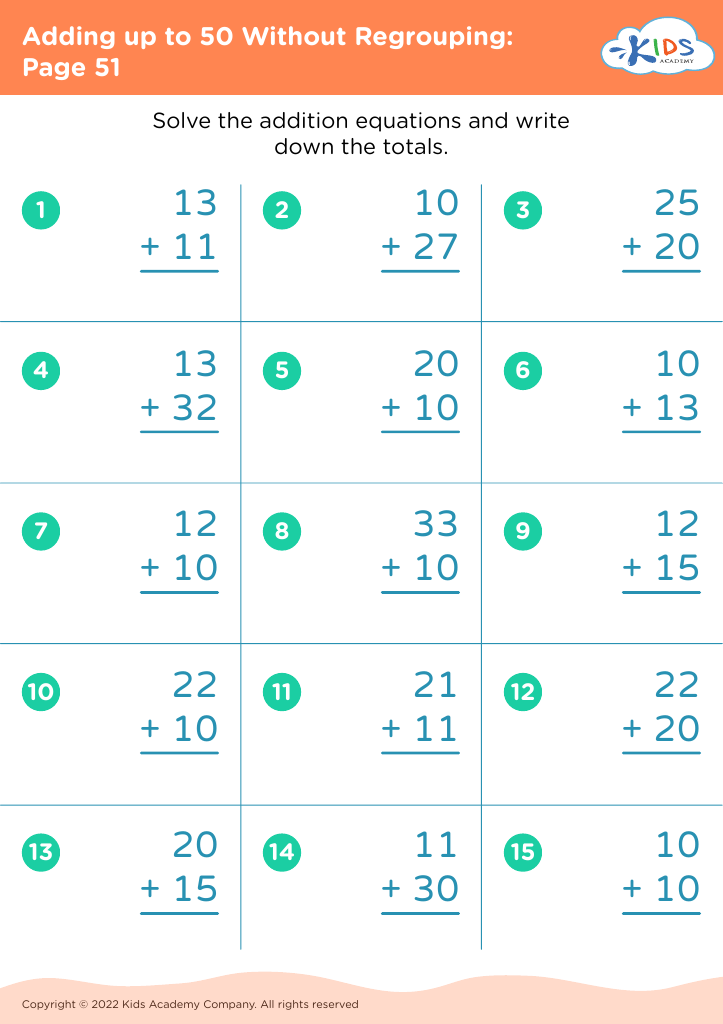Visual recognition Math Worksheets for Ages 7-9
3 filtered results
-
From - To
Explore our engaging Visual Recognition Math Worksheets designed specifically for children ages 7-9! These worksheets aim to enhance visual perception, critical thinking, and problem-solving skills through fun and interactive math activities. Each worksheet encourages students to identify patterns, categorize shapes, and develop number sense in a visually stimulating way. Ideal for both classroom and home use, our worksheets provide educators and parents with valuable resources to boost math comprehension while making learning enjoyable. Access our vibrant and age-appropriate worksheets today, and watch your child gain confidence and enthusiasm in their math skills! Perfect for early learners eager to excel.


Match It up Worksheet


Skip Counting by 10 Through Our Community Worksheet
Visual recognition math is crucial for children aged 7-9 as it sets a strong foundation for their mathematical understanding. During these formative years, children are evolving from concrete to more abstract thinking capabilities. Engaging them through visual strategies—such as diagrams, manipulatives, and visual math games—allows them to grasp complex concepts more easily. For instance, using visual aids can help children recognize patterns, understand number relationships, and solve problems.
Moreover, visual recognition fosters critical thinking and enhances memory retention. By associating mathematical concepts with visual representations, students can build associative pathways that aid in problem-solving and arithmetic fluency. This approach also caters to different learning styles, ensuring that visual learners are engaged and motivated.
Parents and teachers should care about this aspect of math education because strong visual recognition skills can lead to increased confidence, enjoyment, and achievement in math. As students strengthen these foundational skills, they develop a more positive attitude toward mathematics, decreasing math anxiety and promoting lifelong learning. Ultimately, prioritizing visual recognition math is not only beneficial for immediate academic success, but it also equips children with essential problem-solving skills that will serve them throughout their educational journeys and beyond.
 Assign to My Students
Assign to My Students






















